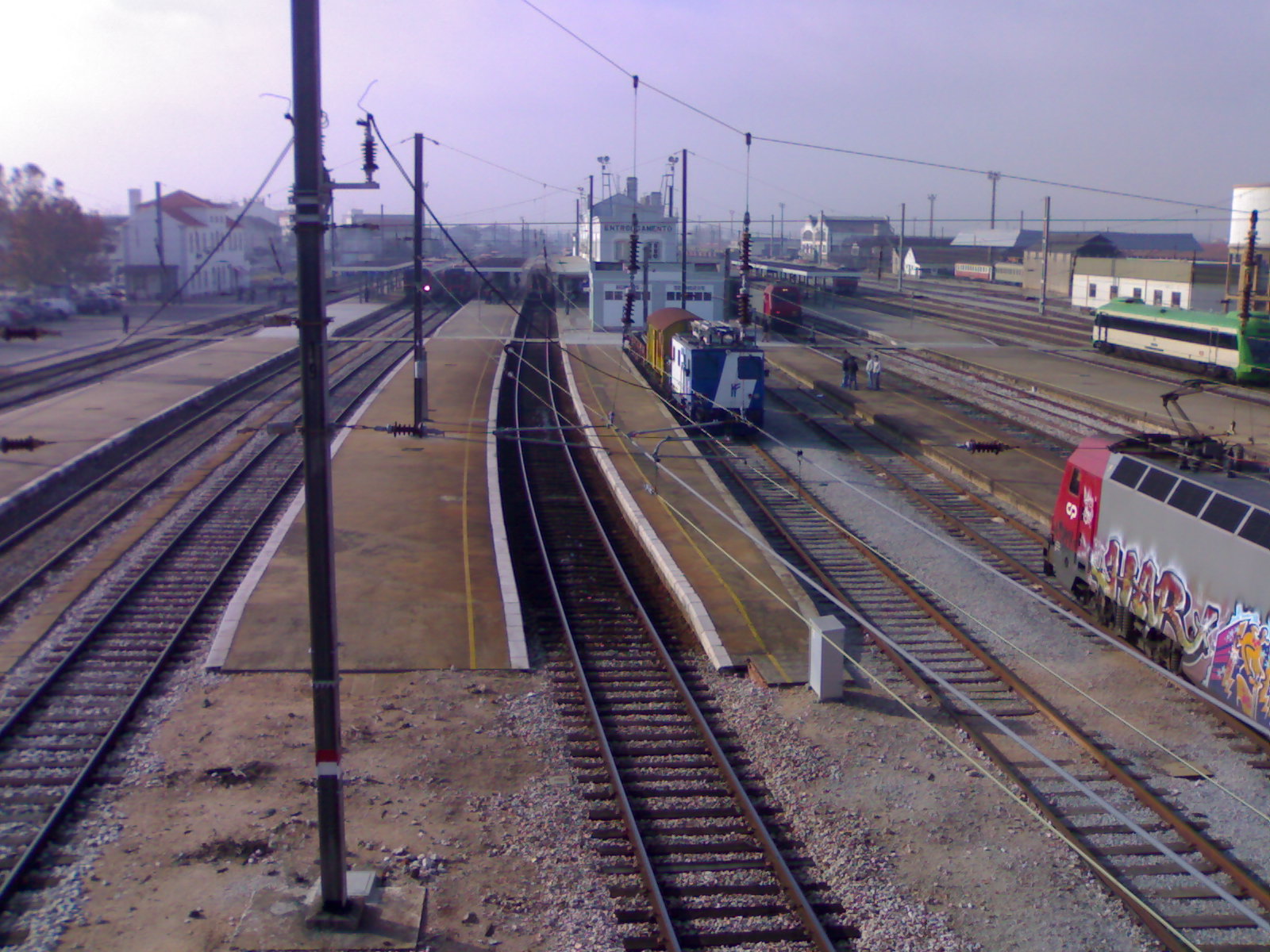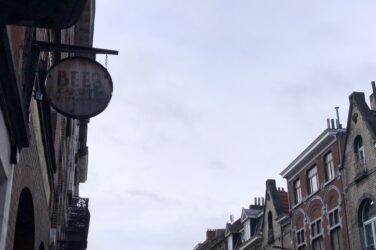You might have heard of it: 2021 is the European Year of Rail. E&M‘s Jessica Verheij reflects on the importance of train travel for our future, pointing out why the current policy of building high-speed lines to connect European capitals might not do the job for sustainability.
I’m standing on the platform, waiting for the train to arrive. Coming from Porto, in the north of Portugal, the intercity train will bring me to the city centre of Lisbon in around one hour. I have made this journey many times before – having grown up in a small village 35km away from this train station – it is the fastest and most convenient way for me to get to Lisbon. Despite its small size, this train station is incredibly well-connected due to its central location regarding both the Portuguese and international rail network. However, as I see the train approaching, it strikes me how little has changed over the last 15 years. Despite minor changes here and there, the trains are still the same, as well as the connections they make, and the times at which they arrive (or should arrive, given sporadic delays here and there). Even the passengers are still more or less the same.
As the train pulls into the station, I do notice one change: the outside of the train is covered with a banner announcing 2021 to be the “European Year of Rail”. Indeed, trains do seem to be making a comeback. Whereas the twentieth century was a century of cars and airplanes, the growing awareness of the many benefits of railway transport is changing the paradigm. Trains being far cleaner, more efficient, faster, and safer than any other mode of travel, both the European Union and its member-states have started to recognize railway transport as a necessary condition for our sustainable future.

Europe’s rail network is booming
With air travel being the fastest-growing contributor to global warming, train travel is growing in popularity as a viable and sustainable alternative. Taking the train can cut greenhouse gas emissions by 90% compared to taking a plane, while train travel is considered the most environmentally-friendly mode of passenger transport in Europe. The European Commission is actively promoting train travel and investments in railway infrastructure, stating that “rail has it all”.
Over the last months, many new cross-border train connections were announced, and night trains are soon expected to run (again) between major European capitals, including Amsterdam, Stockholm, Berlin, Zurich, and Milan. The Trans-Europa Express – a European network of first-class trains connecting 130 different cities which suspended its operation in 1995 – is being brought back to life. At the same time, new high-speed connections are built to reduce travel time between Europe’s most important metropolitan areas, in order to provide an attractive alternative to airplane travel.
Low-speed alternatives?
But despite the dire need for cleaner modes of travel, it’s not all sunshine and roses. While enormous investments are made to build expensive high-speed luxury connections between capital cities, the low-speed and more affordable alternatives suffer. International trains used to ensure important connections between mid-size towns across Europe. However, these connections are now increasingly sacrificed in the name of high-speed trains, which connect large urban centres but no longer stop in between.
A striking example of this can be found when looking at the consequences of the new high-speed connection between Paris and Barcelona, inaugurated in 2013. While travel time between the two cities reduced drastically, from about 12 hours to just over 6 hours, it led to several cross-border “slow-speed” trains between Spain and France being suspended. This compromised other international train connections. Nowadays, a journey by train from Barcelona towards Italy or Switzerland takes longer than before the inauguration of the new high-speed connections. On top of that, in many cases the price of train tickets has more than doubled. In the end, many passengers are faced with less travel options for higher prices, being pushed towards plane travel, instead of away from it.
Nowadays, a journey by train from Barcelona towards Italy or Switzerland takes longer than before the inauguration of the new high-speed connections.
Cut off from Europe’s rail network
Returning to my train station in central Portugal, one thing that has changed is the fact that the international night-trains connecting Portugal to Spain and France no longer stop here. In fact, they don’t even pass through here anymore. Lisbon, the country’s capital city located at the very south-western edge of the European continent, has basically been cut off from Europe’s international rail network. While it used to be connected to both Madrid and Hendaye (at the border between France and Spain) by daily night trains, allowing passengers to transfer to other international train connections, these night-trains were suspended as the Covid-19 pandemic hit in 2020. The Spanish government has now announced that they will not resume the night-trains to Lisbon any time soon due to a lack of demand. This leaves Lisbon, and therefore Portugal, without any running international train connection to the European rail network. Passengers wishing to travel by train to or from Portugal are forced to rely on a number of badly-connecting regional trains – viable only for those looking for adventure, not for those trying to get from A to B.

In fact, Portugal, having suffered the drastic consequences of austerity imposed by the European Commission and the European Central Bank after its bailout in 2011, has not made any significant investments in its railway network for almost a decade. Today, it has less kilometres of running railways than in 1893. Over the last 10 years, it did not add any new kilometre to its rail network, while closing around 140km of it. Train travel and high-speed connections are booming in more centrally located parts of Europe, but peripheral countries like Portugal are – literally – faced with compounding missed connections.
Rail has it all
So far, the development of Europe’s railway infrastructure seems to be focused on strengthening smooth connections between central areas, at the expense of more peripheral, and less important, connections. This tendency inevitably leads to growing inequality. Those who can afford it will soon be able to travel across the European continent in luxury high-speed or over-night trains. At the same time, many people will see their nearest train station being closed, or connections being reduced to a minimum.
But there are reasons for hope. The major advantage of railway is that a large part of the infrastructure is already there: many of the most remote parts of Europe have a train station, even if it has been out of service for decades. Railways connect the entire continent, despite being outdated. Train travel has the potential to connect peripheral regions, without being dependent on a far-away airport. Borrowing the words of the European Commission: rail does indeed have it all.
Towards sustainability for all
However, if rail is to win the battle against cars and planes, it needs to provide a viable alternative by being not only fast but also affordable, convenient, and inclusive. The current tendency to favour high-speed and high-tech solutions over already existing and well-functioning systems will eventually compromise our ability to achieve a sustainable transport network. Europe’s railway system has a long history, and there is no need to reinvent the wheel. More important is the recognition that, for train travel to be convenient and accessible for all, we need to work on building an integrated system that offers smooth cross-border connections, not only between capital cities but also for everyone living in between. High-speed luxury connections cannot replace more affordable low-speed alternatives. International night-trains cannot be suspended due to lack of demand, but should rather be maintained as strategic connections.
Europe’s railway system has a long history, and there is no need to reinvent the wheel (or the rail).
If the European Union and its member-states can push this vision forwards, eventually even my small train station in Portugal will benefit – not through a newly-built high-speed connection, but by continuing to be a node in a well-functioning and integrated transport system. If we want sustainability to work, it needs to work for everyone.
Cover photo by André Marques (Flickr) | Licence: CC BY 2.0










